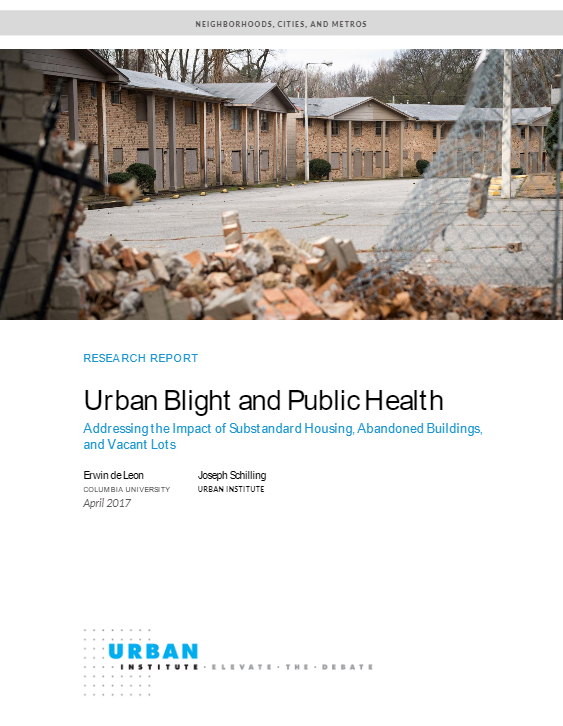The Impact of Abandoned Properties on Public Health
It’s not news that where we live impacts how healthy we are. Public health is affected by many factors: neighborhood safety and walkability, nearby access to fresh food and health care, and the conditions of the homes we live in. The latest report from Urban Institute looks at how blight – resulting from abandoned properties and substandard housing – contributes to health problems.
Urban Blight and Public Health: Addressing the Impact of Substandard Housing, Abandoned Building and Vacant Lots synthesizes information from multiple other studies to provide detail and clarity on how poor housing and neighborhood conditions affect health. While we have long known the negative health effects of living in substandard housing, this report focuses on how such housing can also affect the health of those living nearby. The authors examine reported correlations of multiple public health problems with living near vacant and abandoned buildings or vacant lots, including higher rates of chronic illness, mental health problems and homicide.
The report details several blight elimination and healthy housing strategies and offers a series of recommendations for improving public health in areas affected by abandonment and blight:
- Take Comprehensive and Coordinated Place-Based Approaches to Address Blight and Health
- Expand the Application and Use of Health Impact Assessments
- Track and Assess Health Outcomes from Code Enforcement and Other Vacant Property Policies and Programs
- Enhance the Capacity and Expectations for Collaboration between Community Organizations and Public Health Researchers
- Infuse Public Health into Housing Policy, Codes, and Practice
